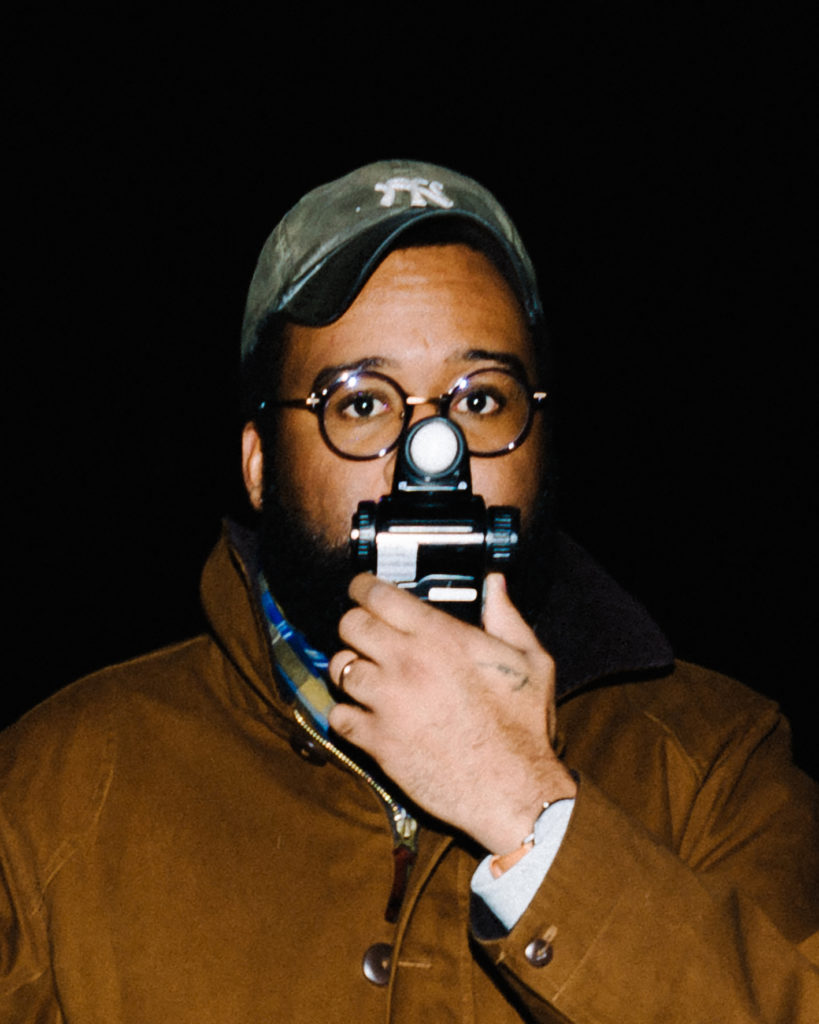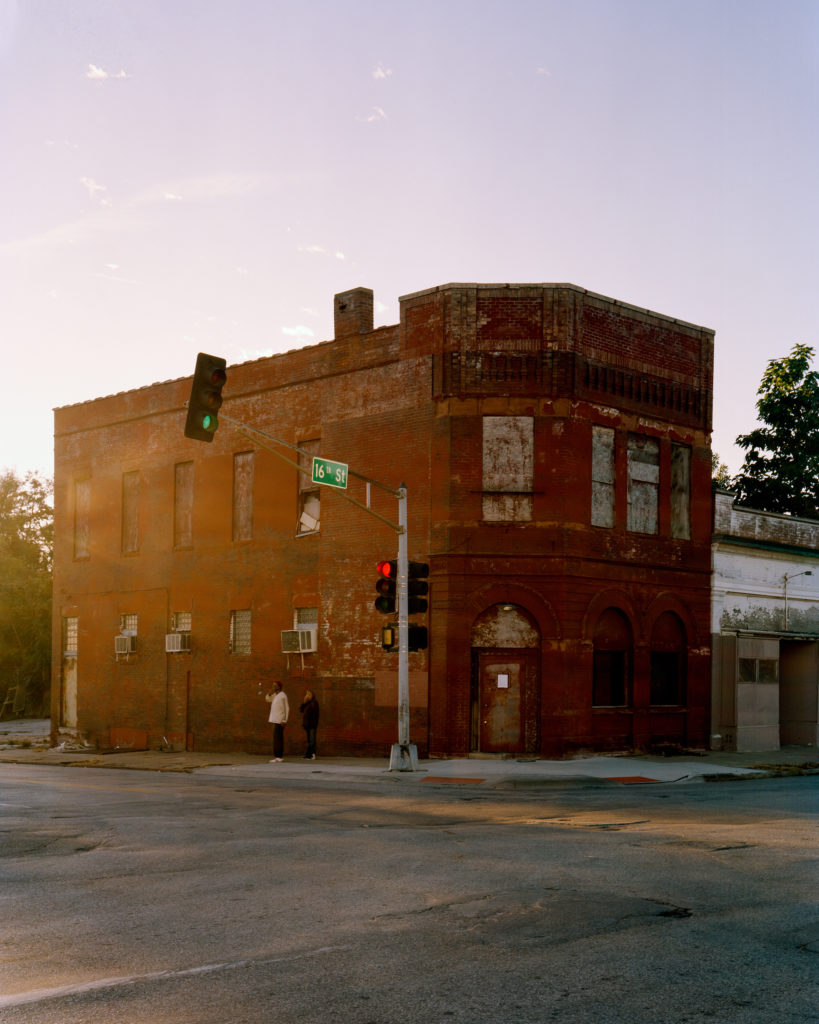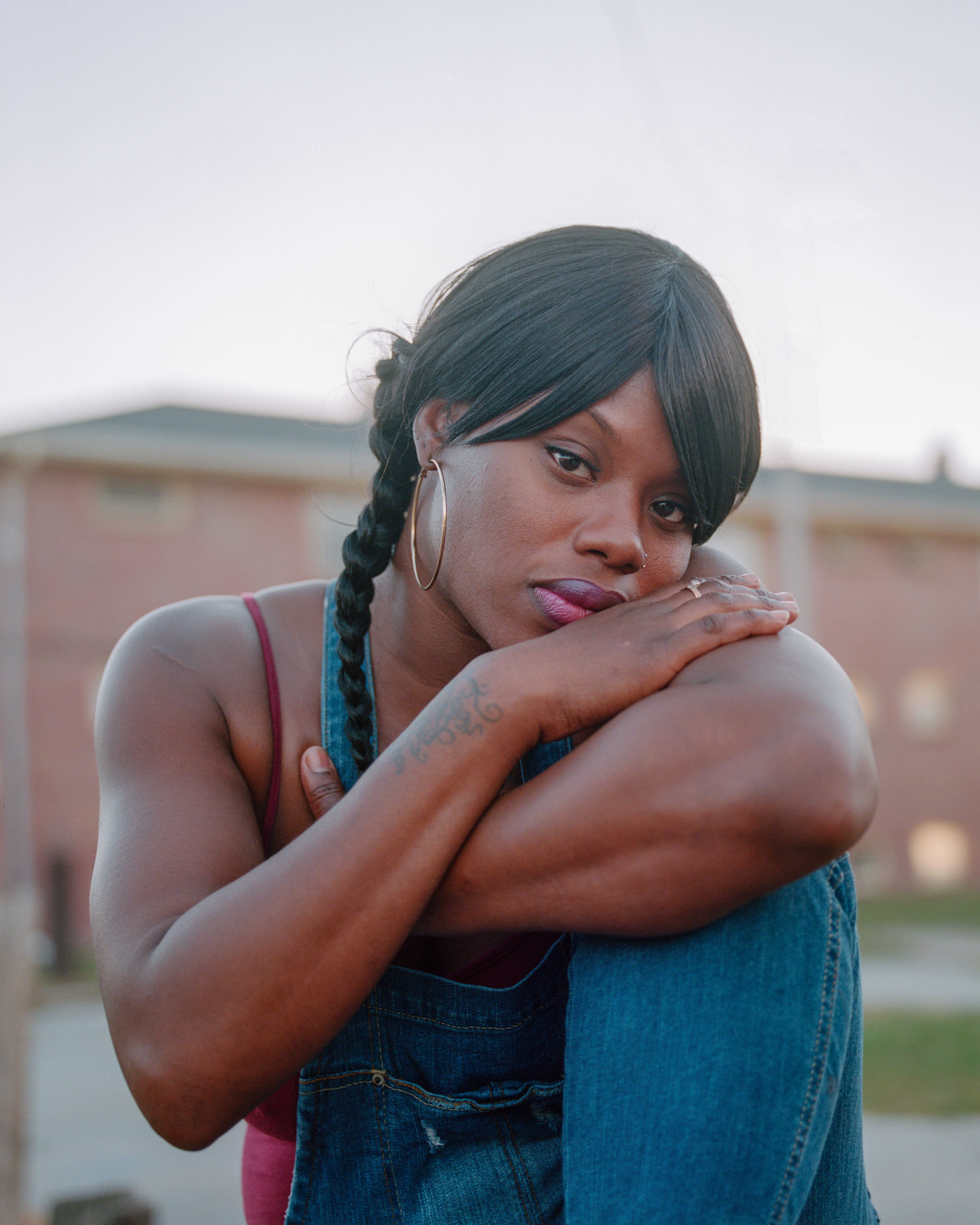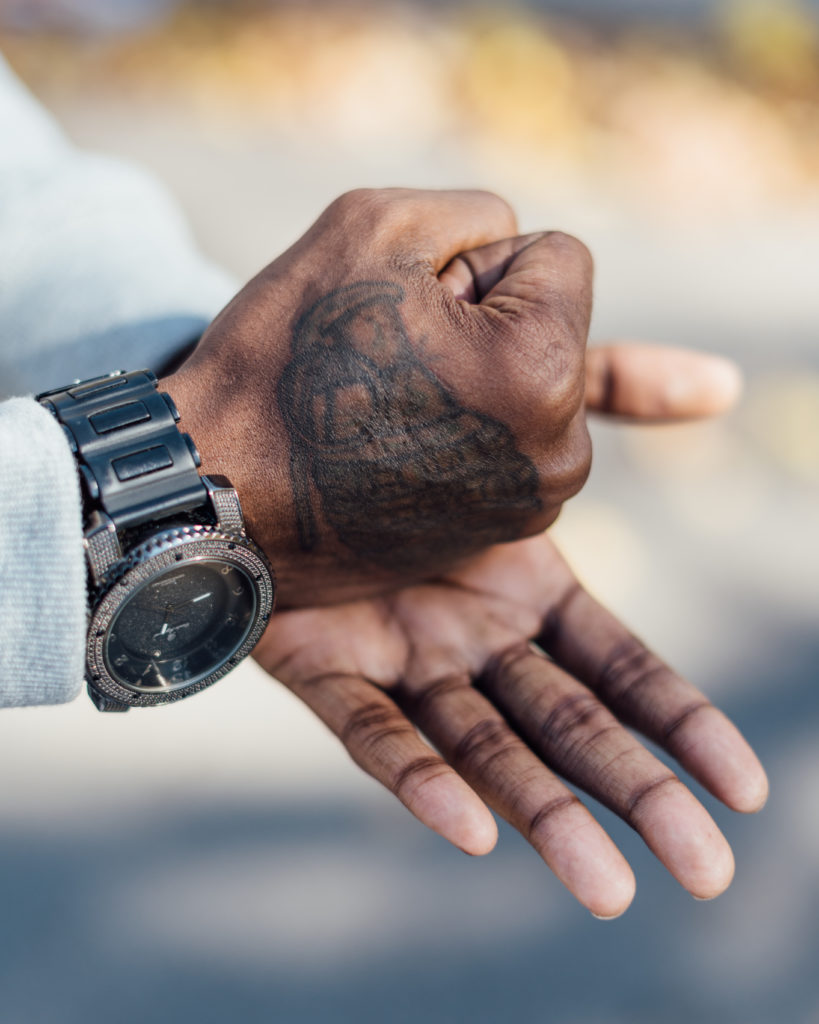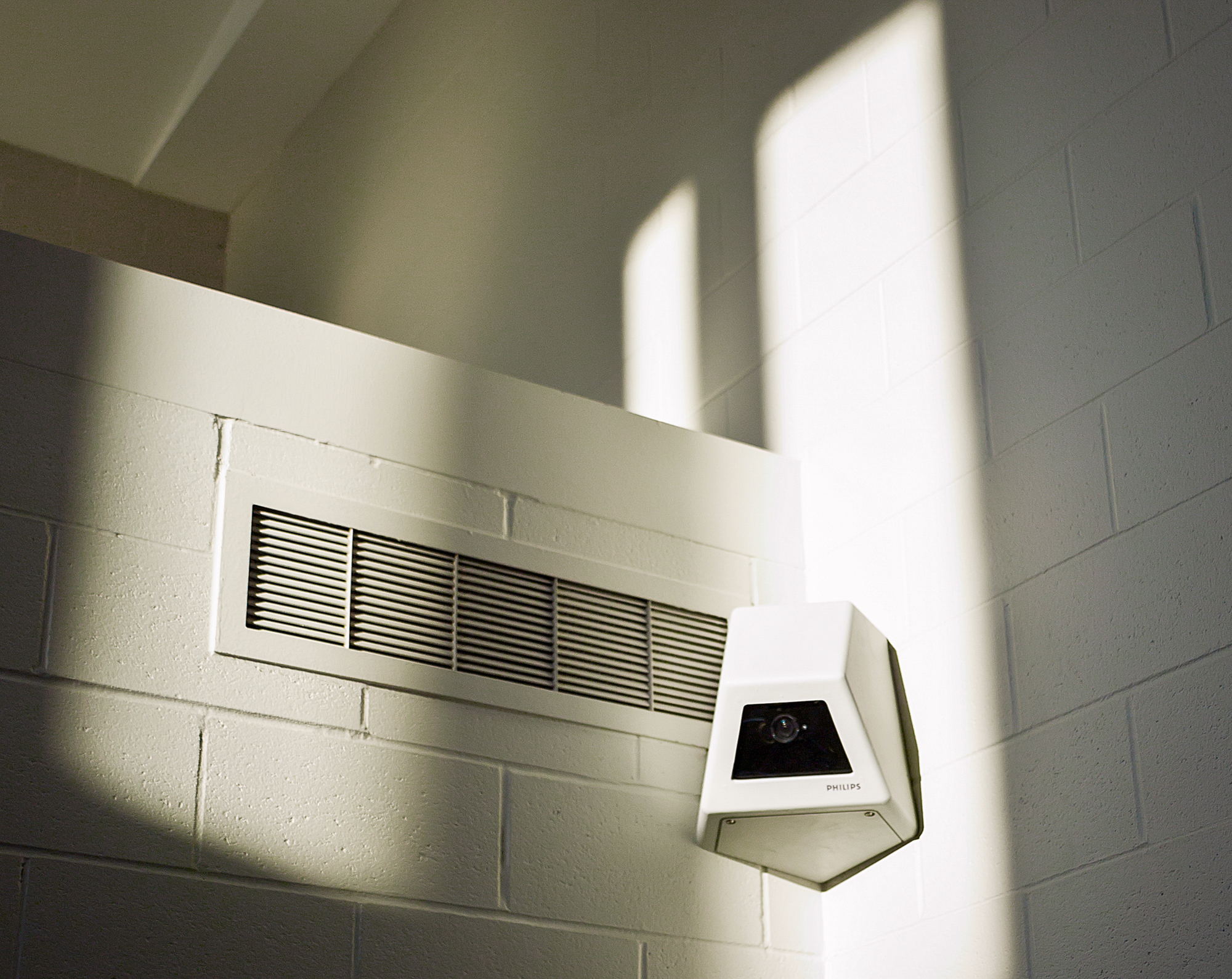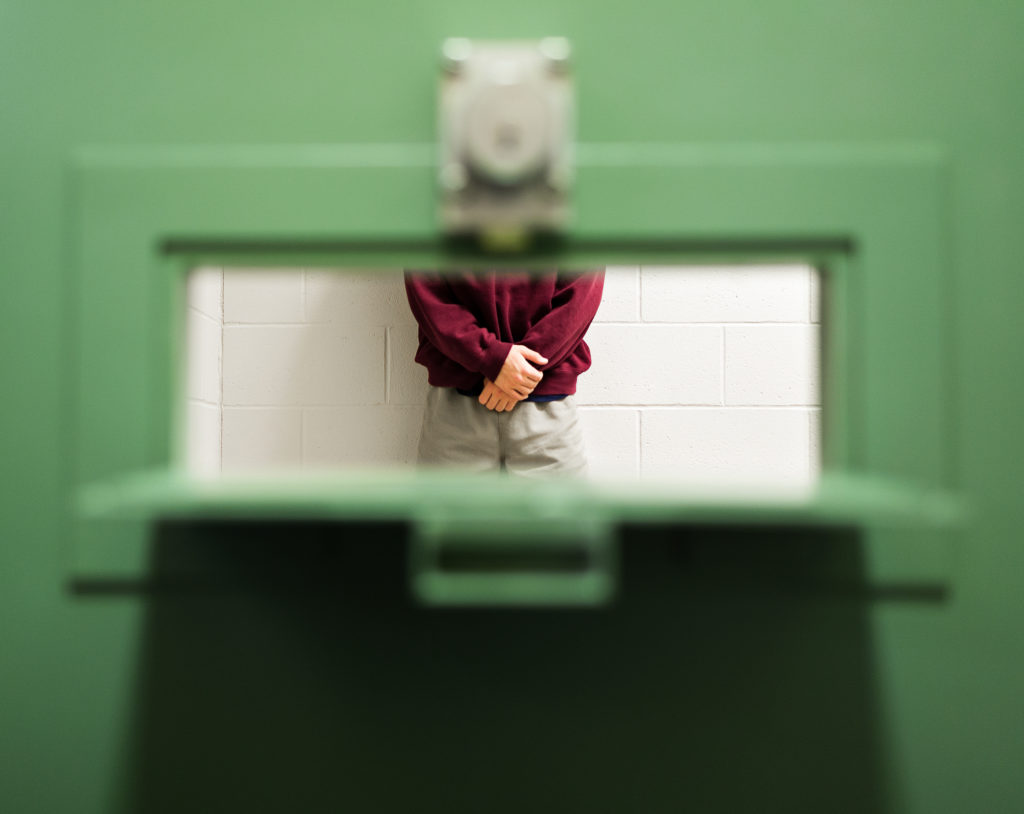Zora J Murff On the Intersections of Art and Blackness in America
Posted on May 4, 2021
Artist Zora J Murff’s works are investigations: of history, of systems, and of Black spaces. Read our conversation here, then tune in May 6 to hear his Lens Mix conversation.
An Assistant Professor of Art at the University of Arkansas, Zora J Murff received his MFA from the University of Nebraska–Lincoln and holds a BS in Psychology from Iowa State University. Merging his educational experiences, Murff uses his practice to highlight intersections between various social systems and art.
Murff joins incoming Aperture Foundation Director Sarah Meister and FotoFocus Artistic Director and Curator Kevin Moore for a (virtual) Lens Mix conversation on Thursday, May 6 from 6–7 pm EST. (Free and open to all, but registration is required.)
In advance of the event, we called Murff to talk about his work.
FotoFocus: What drives your work? What brought you to photography in the first place, and what keeps you compelled or interested to continue making photographs?
Zora J Murff: Photography for me was a means of personal escape when I was a social worker. That type of work is demanding in the sense that it’s really hard to lead a 9-to-5 lifestyle where you can shut work off at the end of the day because you’re dealing directly with people’s lives and livelihood. And so it was a way of having something that was completely selfish, completely mine, something I could do on my terms for myself. It quickly became a way of me better understanding my position, my existence, and being able to provide ways of seeing for others.
I saw these Sally Mann photographs at the Des Moines Art Center, and this was in the beginning of taking my photographs, of her three children, and it transported me back to a time, thinking about my brother and my cousin and I being really young. So here I am, in this museum staring at a photograph, and I’m thinking about these deep bonds with my family. And that’s when it clicked for me, that, Oh, this is what photography does, this is what art can do, and I want to do that. That was, I think, the way into the work.
As I continued to progress, I was still in social services, and the sort of inquiry and work that I had to do professionally — I was developing those skills alongside my artistic skills. Those things really started to meld together. What motivates my art is really almost an investigation: how do images shape meaning and belief, what does it mean to be somebody that has that power or that influence, and what are the boundaries of responsibility within that? Particularly, I’m often looking at various institutions, but pointing towards the ways they are crafted to be harmful. And often looking at those individuals who are most vulnerable and at risk of being harmed. And as a way of considering on what level do we talk about reparations, trying to apply correctives. And in what ways do we need to just completely abandon these things that we continue to uphold that really just continue to have harmful results.
I’m often dealing with intersectional thinking in the sense that my particular focus is Blackness, and I would say Blackness in the context of being American, being a man. But even though I have that very particular lens, there are different ways of expanding the conversation because all of the stuff overlaps in these really complicated ways.
FF: That’s something that I thought while looking at your images in At No Point In Between, which I thought was really brilliantly done with its mix of the found or historical images, the portraits, and then the contextual, like the highway that razed an area to run through, to show the nuance and complication of it, and how those systems intersect. I was curious, with that series, what took you to North Omaha, and how did it come together?
ZM: I went to grad school at the University of Nebraska–Lincoln. I happened to be taking a friend to the airport, and on the way back, rather than hopping on the interstate, trying to find a place to eat lunch I found this really great soul food restaurant in North Omaha. And getting into the neighborhood, I noticed that everybody I was seeing was Black. I didn’t see really any white people as I was passing through the neighborhood. And that was the first time that, since I had lived in Nebraska, I was in a space that was completely Black. I thought, I want to know more about this place, and the space, because it’s making me feel a particular way. So I went back, and it was the same sort of thing — that I walked down the street, and I wasn’t seen as a threat or just not acknowledged. There was something really affirming in that.
So I start asking questions. And the first story I was told was about the spectacle lynching of Will Brown. I had this really severe conflict in the way the space was making me feel, and the history or sort of quote-unquote folklore that People tell when you just ask about it generally, like, What do you know about North Omaha? And then also at the same time, deciding to watch the footage of the police murder of Laquan McDonald. Just having all of these really big sorts of existential questions related to me, and my Blackness, and how I’m seen in the world, and what spaces exist for me and what spaces don’t exist for me. And why is it that the space that I’m in in North Omaha is being referred to as the ghetto, or why professors and peers and folks are asking me “am I thinking about my personal safety going there” and all of this stuff. All of the stigmas that come with it — and it really just boiling down to its Blackness, right. That’s what you’re talking about when you say those things. You say those things because it’s a quote-unquote Black space. And so I started digging through these histories, finding all of these things, experiencing the landscape, talking to people, learning more than I ever have about Black American history. I think that’s what took me there, that’s how the work started. It was the process of learning things for myself, making photographs, and then reflecting on what does it mean to make these images and then put them into a context. What am I really trying to talk about, what am I really trying to say?
FF: Looking at your earlier series Corrections, did your social work background lead you to that?
ZM: Yeah, I moved from living in Des Moines, Iowa, to Iowa City looking for work and found this job at a detention center working with kids on probation. While I was working there, I decided that I wanted to go back to school to study art. I had to make work, I was expected to be making work, I was a full-time student [and full-time employee], and I just decided, Well, at least I find what I do rather interesting, how can I photograph in this context? I think a lot about resource and efficiency when I think about my methodology. So it was a way of also being able to make the best out of the situation, so I can be at work, and even though I’m not using my camera, I can be thinking about what I’m doing in real time in relationship to what I’m trying to make photographically.
FF: Did that dual role, that you were looking as artist, too, change how you saw things?
ZM: I think it definitely did, because it made me have a more critical eye of what I was doing and what I was getting into. And the larger social dynamics at play: That a majority of the kids were victims of generational poverty; that the neighborhood that I lived in, that was also considered to be quote-unquote ghetto, was where the majority of the kids I worked with lived themselves. There were just all of these things that I started to awaken myself to. I think it would have likely been happening had I not been trying to be an artist, just because that’s the job, to work yourself out of work, to create a world where you are no longer necessary. That requires a level of criticality in itself. But thinking about it in an artistic context, the boundaries become much more flexible and fungible. So if I make a portrait of a kid, yes, I’m making a portrait of them, but at the same time I can be talking about this person’s existence as a statistic, now. When we talk about the school-to-prison pipeline and we talk about how police use things like disorderly conduct charges as a means of just being able to quickly file a charge and arrest somebody. That portrait means that too.
FF: Can you tell me about Exceptionalism as a belief system for erasing oneself?
ZM: That was a work that I was commissioned to make as a part of an exhibition through the University of South Florida Contemporary Art Museum. They wanted to do this show, it was supposed to be a big in-person thing, but obviously with Covid-19 we couldn’t do that. They wanted to find a way to still have the exhibition, and still work with the artists, so the curator decided on using Kodak Carousel projectors in the space. Each artist could make a collection of slides and they would be projected into the space all simultaneously, and that way even though people couldn’t attend, they could record the space and make this really beautiful video production of it. When the curator and I discussed the idea, I said, let’s challenge it a little bit. So I asked if I could consider the work as a sculptural piece.
I started to look back through all the images I had ever made oh, digging through the archives and thinking about the present moment. It was around that time that I had learned about Ahmaud Arbery’s murder; my school had just shut down; and we were all in this new way of existing. The town was just really quiet because of that. The only thing I could hear was all the construction of these houses in this neighborhood I was living in, which were still going up. So I started making images inside of them and of them. And then I learned about Ahmaud Arbery, and I was thinking about what I was doing, in the circumstances of his murder, and then had this moment of what does it mean to be doing this deadly act, so to speak.
The title of the show was The Neighbors, so I was thinking: What does it mean for me to be a neighbor, for me to have a neighbor? To live in this world where I’m hyper-surveilled? And I thought about the ways in which one is conditioned to strive for excellence. Even in my own education, or the institution I work for now, it’s all crafted in this way that we are aspiring toward the principles and the ideas of white men. And so when we think about this idea of being an exception, of excelling — at what level are we erasing parts of ourselves? And so this idea of a neighbor in this American context, this idea of living next to somebody and thinking about on what level my survival is wrapped up in that. What am I supposed to be to this person? This idea of self-compromising to suit somebody else’s norms or beliefs. So I put together this series of images that, when seen together, sort of do that for me.
Lens Mix 6: Zora J Murff and Sarah Meister, Zoom Webinar, May 6, 6:00 pm – 7:00 pm EST. Lens Mix talks are free and open to all, but require registration to receive the Zoom webinar link.
